Yet it has come to this. Decades of legal abuse will sdimply die out as we establish a globasl consensus in favor of what was obvious early on. Yet even when I first began this Blog, few in position were prepared to challenge the whole Drug War Meme.
That is only fifteen years ago and now we see a steady opening of the whole industry to a rational research approach in which users are now closely monitored and potentially managed, not too different from our management of alcholism.
Understand that even alcoholism is a problem for around an amazing 15% of the population. Reversing that would be nice.
How the Drug War Dies
Just a few decades ago, the left and the right, politicians and the public, universally embraced the criminalization of drug use. But a new consensus has emerged.
YESTERDAY 5:00 AM


https://www.thenation.com/article/society/drug-war-consensus/

Sea change: The public has increasingly come to understand that the drug war imposes harms of its own. (Alex Wong)
Subscribe To The NationSubscribe now for as little as $2 a month!
Annapolis Police Chief Ed Jackson was raised by a single mother in a Baltimore housing project. “Police officers weren’t seen as our friends,” he recalls. He and his five siblings were driven by “never wanting to disappoint” their protective mom, he adds—and this helped keep them in school and off the streets.
After Jackson graduated from college, a buddy who had joined the police force suggested that he do the same. He saw a chance to both do some good and pay down his student loans. He never expected to make a career of law enforcement.
Nor did he ever expect to become an advocate for the more lenient treatment of drug use. He describes himself as originally being a “traditionalist” who saw the War on Drugs as “noble and right.” Even now, he says, “I believe firmly in law and order.”
Today, however, he is also an outspoken member of the Law Enforcement Action Partnership (LEAP), which favors decriminalizing drugs and treating addiction as a health issue, not as a police matter.
Jackson’s personal evolution mirrors that of much of our political leadership—on both the left and the right. The change since the 1980s and ’90s is striking: Political rhetoric, at least, has done a 180. Back then, mainstream politicians were unapologetically all-in on drug policing, whereas now it has become almost obligatory to say, “We can’t arrest our way out of this.”
Back then, Democrats and Republicans tried to outbid each other in terms of who could create the longest, harshest sentences for drug offenses and the most onerous corollary consequences, like banning formerly incarcerated people from public housing, student loans, food stamps, and other welfare programs. But today candidates vie to appear more compassionate—even Donald Trump signed a criminal justice reform bill.
In 1989, then-Senator Joe Biden criticized President George H.W. Bush’s call for more police and prisons to fight drugs as not “tough enough.” The year before, polling had shown that 90 percent of the population favored the drug war.
Now, however, 18 states have fully legalized marijuana. Oregon decriminalized the possession of all drugs in 2020, with more states looking to follow suit. And a bill for full federal decriminalization has been introduced in the House.
Jackson’s story helps explain this sea change—and what it has taken to challenge America’s unquestioning enthusiasm for a drug policy dominated by law enforcement.
Tough on crime: Joe Biden, who as a senator supported harsher prison sentences to fight drugs, at a 1989 Senate Judiciary Committee hearing on drug abuse. (Marcy Nighswander / AP)
Jackson patrolled his first beat in Baltimore in 1983. “Part of academy training,” he says, “is that they indoctrinate you. You learned early on that drugs were evil, drug dealers were evil, and people who were addicted or sold drugs are burdens on society.”
Growing up, he saw what he viewed as “the ravages of drugs” all around him. Some kids he knew started using or selling, and their lives became a cycle of street, jail, prison, parole, and back. More than one died of an overdose.
At first, Jackson saw little reason to question the drug war. “I had this very myopic view about the end result, because it was sold to me that drugs were bad because they destroyed people’s lives…. I didn’t think as critically about it as I should then.” Essentially, he didn’t distinguish between the harms caused by the substances themselves and those caused or exacerbated by drug policy.
Nor did most politicians—or journalists. In the 1980s, Democrats had signed on to the War on Drugs for strategic reasons: Their goal was to start winning elections and stop being dismissed as immature hippies who were soft on crime.
Even most Black politicians—who might have been expected to protest a policy that would inevitably criminalize people of color—bought in. While members of the Congressional Black Caucus were overrepresented among the few resisters—including Representatives John Conyers and George Crockett, both of Michigan—most felt that drugs were such a threat to their constituencies that they had no choice but to get tough.
In fact, one of those who pushed longest and hardest for more enforcement was Harlem Democratic Representative Charles Rangel, a cofounder of the caucus. Even before Richard Nixon declared an “all-out offensive” against drugs on June 17, 1971, Rangel had urged the president to crack down. He would chair the House Select Committee on Narcotics Abuse and Control for 10 years.
Rangel and his allies framed the issue as one with no middle ground: Either you supported increased policing and harsher sentencing, or you supported heroin and crack and thought it was fine to sell drugs to children.
Change makers: Annapolis Police Chief Ed Jackson (left), and former Baltimore mayor Kurt Schmoke (right), who challenged the drug war in 1988. (right: Rick Bowmer / AP)
In the 1980s, most of the tiny minority who argued for less punitive policies were white men. Both Black and white drug warriors derided them as egghead academics who didn’t understand how drugs affected low-income communities and just wanted permission to smoke weed.
Nonetheless, one of the most prominent early drug war dissenters was Black. In 1988, Baltimore Mayor Kurt Schmoke tore up a speech he’d planned to give at a meeting of the US Conference of Mayors. Instead, he made a case for decriminalization, arguing that the drug war was wasting billions of dollars and treating a health problem as a crime.
“I knew that I was basically ending some options for my political career,” says Schmoke, who is now president of the University of Baltimore. “But I just thought that it was an opportunity that I couldn’t pass up to get both the big-city mayors and big-city police chiefs thinking differently.”
The response from the stunned audience was “overwhelmingly negative,” Schmoke recalls. Even though his speech was grounded in fact and backed by his own experience as a former assistant US attorney, most listeners weren’t ready for his message.
However, at least one member of Schmoke’s own police force did agree: Ed Jackson. By that point, Jackson was working his way up the ranks. He knew firsthand that the people getting arrested for drugs weren’t drug barons or kingpins; they were mostly hapless young men who’d grown up where he did. “I’m thinking, ‘Boy, many of these people are victims for a lot of reasons—and this is not what I thought it was,’” he says.
Around 1995, Jackson made lieutenant. After hearing Schmoke’s speech, he’d started to study the history of drug laws. He got a master’s degree in applied behavioral science from Johns Hopkins, which “opened my eyes to how the world works and how America works,” he says. Back then, he felt that he couldn’t speak out publicly if he wanted to stay in law enforcement. He’d seen what happened to those who did, including Schmoke, who’d probably lost any chance of a national political career. (After three terms as mayor, Schmoke decided not to seek reelection or higher office in 1999.)
HBO’s iconic show about the drug trade in Baltimore, The Wire, which ran from 2002 to 2008, was based in part on real events, including some that Jackson had witnessed. According to Jackson, The Wire’s “Hamsterdam” storyline—in which a police commander declares one area a safe zone for drug use and sales and cracks down everywhere else—was based on a real proposal. It was never implemented, but the officer who’d suggested it was ostracized and permanently sidelined, Jackson says. Jackson took note and became increasingly concerned about how to change drug policy.
For Jackson and many other Black leaders, a major turning point came in 2010, when the New Press published civil rights attorney Michelle Alexander’s The New Jim Crow: Mass Incarceration in the Age of Colorblindness. The paradigm shift that this book spurred in the Black community would drive reform elsewhere as well.
Scholars and activists had previously noted the extreme racial disparities in the enforcement of drug laws. None, however, had made their analysis as accessible as Alexander’s, which connected the mass criminalization of Black people under the guise of the drug war to Jim Crow laws that had used the criminal legal system more overtly to suppress Blacks.
Jackson encountered the book when he was teaching at Baltimore City Community College. “Word spread like wildfire” among students and academics, he says. Soon he began to hear about it in neighborhood meetings and from people recovering from addiction. “It was written in a way that people could relate to,” says Jackson, who as chief of police in Annapolis, Md., now supports programs and policies that treat addiction as a health problem rather than a crime.
“It changed the game for me,” says the Rev. Dr. Frederick Douglass Haynes III, the pastor of the 12,000-strong Friendship West Baptist Church in Dallas. At the time, Haynes was cochair of the Samuel DeWitt Proctor Conference, a network of Black clergy devoted to social justice. They invited Alexander to speak—an invitation that would soon lead to dozens of others.
“She exposed the fact that mass incarceration had taken place on the backs of Black men in this so-called drug war,” Haynes says. “And I was especially reminded of Tupac Shakur, who had already put it in rap terms. He said, ‘Instead of war on poverty, they got a war on drugs so the police can bother me.’”
Alexander backed her argument with facts and data. She gave context to ideas that had been put forward by rappers and radicals but had not found mainstream acceptance—especially within the Black church, where drug use tended to be viewed as an individual sin and those who engaged in it were often rejected as a threat to “respectable” Black people.
Haynes described organizing an anti-drug march before he read The New Jim Crow. “Our theme was ‘Dreams Over Drugs,’” he says. “I won’t say we were supporting the drug war, but definitely, as far as I’m concerned, we were allies because of our ignorance.” After encountering Alexander’s work, Haynes saw the problem very differently. Police officials he knew confirmed what she had written about how whites sell and use drugs at least as much as Black people do—but rarely go to prison.
Haynes changed his ministry almost immediately and would preach dozens of sermons on the issue. Knowing how African Americans—along with other marginalized groups like Hispanics and Indigenous people—were targeted, he began to feel far more compassion for those who were addicted and incarcerated, he says.
After Alexander spoke at his church, Haynes recalls, a woman described the epiphany it brought her. For years she’d been angry with her brother, who had been imprisoned. Listening to Alexander, she realized that her anger was misplaced and needed to be focused instead on the system of mass incarceration.
People all over the country were reaching similar insights. Alexander feared that her book wouldn’t have currency at a time when America had just elected its first Black president, and indeed, when it was first published, she had trouble finding audiences for her message, and the book received few reviews. But it became a best seller once community and church leaders like Haynes began to spread the word. “I would tell my colleagues that this is your companion to the Bible if you are serious about social justice,” he says. He personally handed out more than 50 copies. Hundreds of groups began gathering to discuss it and figure out how to take action.
The New Jim Crow also inspired activism within prisons, prompting many to try to ban it, some successfully. It kick-started a movement led by formerly incarcerated people, who were now being given a more sympathetic hearing. Susan Burton, herself formerly incarcerated and in recovery from addiction, founded and runs a nonprofit called A New Way of Life, which helps women like her.
“I started ordering the book just so I could give copies away to people,” Burton says. “I gave it to the legislature. I gave it to my city council person. I gave it to my board of directors. I ordered so many that the publisher couldn’t keep up.” (The same press would later publish her award-winning memoir, Becoming Ms. Burton).
The book also laid the groundwork for new coalitions that brought together traditional civil rights organizations like the NAACP and drug and criminal justice reform advocates. Until then, most white-led reform groups hadn’t prioritized anti-racism. And as hard as it is to imagine now, most Black-led civil rights groups hadn’t prioritized fighting mass incarceration, preferring instead to work on issues like affirmative action, education, and housing discrimination.
“In 2009, I was asked to be the first criminal justice director in NAACP history,” says Robert Rooks, who is now the CEO of the Reform Alliance, which is focused on probation and parole. The NAACP program emerged out of an initiative started by the organization’s president at the time, Ben Jealous.
Rooks began educating the leadership of local NAACP chapters, whose communities were being harmed by police violence, about the need for change. When Alexander’s book came out, he immediately recognized that it could make his case for him. “I bought Michelle’s book and gave it to every board member at the NAACP,” he says, adding that the connection she made between Jim Crow and the drug war was crucial to changing minds.
In 2011, the NAACP officially endorsed ending the drug war. And new alliances were being forged not only within the Black community: White faith groups seeking racial justice also began to read the book. At the same time, funders who otherwise disagreed on nearly everything, like George Soros and the Koch brothers, agreed that the drug war was expensive and ineffective.
Critically, rising Black opposition to harsh drug enforcement policies also meant that the remaining Democratic support for these measures cratered. Once African American leaders began calling out drug enforcement as racist, it became much harder for whites to argue otherwise.
Simultaneously, extreme racial disparities in the way addiction was treated by the criminal justice and medical systems became even more obvious, as journalists reported on the massive increase in prescription opioid addiction and overdose deaths over the past two decades.
In the media, opioids were portrayed as a white middle-class problem: Innocent users had gotten hooked thanks to the misdeeds of rapacious physicians and corrupt pharmaceutical companies. This wasn’t exactly accurate: Prescription drug addiction hit the working class and poor hardest, and 80 percent of new users started by taking the medications illegally, obtaining them from friends and family, not doctors. But the perception garnered sympathy.
Meanwhile, for several decades, a small cadre of activists, including what is now the National Harm Reduction Coalition, the Drug Policy Alliance, and local needle exchange providers, had been working tirelessly for drug sentencing reforms and compassionate harm reduction measures to reduce the spread of HIV. They argued that policy should focus on pragmatic ways to reduce damage, rather than seeking the impossible goal of a “drug-free America.” They met with little success: Politicians did not want to “send the wrong message” about drugs, regardless of whether softer approaches could save more lives.
As the concern about prescription opioids began to rise, though, the resistance to harm reduction began to fall. When white middle-class parents thought it was their kids who might die or be incarcerated for decades, harm reduction no longer felt like “sending the wrong message”—it seemed like the right thing to do. “All of a sudden, with the opioid crisis, we now see it as a public health crisis because there’s a white face attached to it,” Haynes says. “We did not do that with the crack cocaine epidemic.”
This noticeable shift toward compassion made Alexander’s point almost as strongly as her book had. “I think the concept of harm reduction was important,” says Kassandra Frederique, executive director of the Drug Policy Alliance, “and I think it became more effective when we got the idea that harms are not just associated with drugs but with drug prohibition. What The New Jim Crow laid out really incredibly was the harm.”
Change is here: Kassandra Frederique, executive director of the Drug Policy Alliance, at a rally calling on New York State to legalize marijuana. (Erik McGregor / LightRocket via Getty Images)
Meanwhile, change was also brewing on the right. Most conservatives who began rejecting the drug war were not influenced by The New Jim Crow. Instead, many revised their position via a process that political scientists call “identity vouching.” Essentially, the idea is that the persuasive capacity of an argument depends in part on the speaker’s identity: If the speaker is “one of us,” the argument will carry much more weight than it would if the speaker is “one of them.”
In their book Prison Break: Why Conservatives Turned Against Mass Incarceration, David Dagan and Steven Teles describe how identity vouching was crucial to this reversal in attitudes on the right. Chuck Colson is a prime example: He served time in prison for his role in Watergate and also founded a prison ministry. But his conservative and religious credentials helped him convince influencers on the right that America’s prison binge had gone too far. While libertarians had long been concerned about the costs of the drug war, that argument alone rarely convinced culture warriors. Colson, portraying reform as an issue of justice for the Christian right, helped convert staunch right-wingers like Newt Gingrich and Grover Norquist.
Identity vouching also helps explain the success of The New Jim Crow among Black leadership and faith groups, which had previously avoided taking on the drug war. Arguments made by white policy reformers or radical Black activists often failed to move Black churchgoers. But by describing her own path from skeptic to acolyte on the issues in her book—in her introduction, Alexander recounts how the first time she saw the drug war compared to Jim Crow, she considered it a polarizing overstatement—she was able to bring far more people along. By 2011, even Charles Rangel had cosponsored a bill to legalize marijuana.
The rise of the Internet also allowed perspectives that the mainstream media had ignored to reach larger audiences. Because the early users of the Internet—mainly academics, libertarians, Deadheads, and computer geeks—were hardly in favor of drug crackdowns, drug policy reformers have long had an outsize voice online. Internet discussion boards, fictional shows like The Wire and Breaking Bad, and documentaries like Thirteenth and The House That I Live In all complicated the binary view that drug policy could only be either an all-out war or a hypercapitalist dystopia where Philip Morris is selling fentanyl at Walgreens.
“When I think about the shift in attitudes that has occurred around drugs over the last 20 years, a lot of it has been community advocacy and the work of grassroots groups, but it’s also been a shifting in our cultural narrative,” says activist Deborah Peterson Small, who worked for years to roll back New York State’s draconian “Rockefeller laws,” which mandated 15-year-to-life sentences for low-level marijuana, cocaine, and heroin offenses. These campaigns, in New York and dozens of other states, also helped reduce the political salience of the drug war by showing that reforms actually didn’t result in the criminal free-for-all that prosecutors claimed would occur. In a campaign driven by conservatives, Texas became a pioneer in reducing its prison population. California initiatives that were popular with voters and drove decarceration also proved reassuring. The failure of the sky to fall as state after state legalized marijuana didn’t hurt, either.
Maia Szalavitz
And the Black Lives Matter movement, galvanized by Derek Chauvin’s murder of George Floyd, is in some sense a culmination of the work of those who were inspired by The New Jim Crow to fight mass incarceration as a racial justice issue. The Breathe Act, sponsored by the movement, endorses decriminalization, harm reduction, and the abolition of the Drug Enforcement Administration.
Frederique, of the Drug Policy Alliance, notes that Alexander’s work was critical to the movement because the drug war “was a policy that was created to lessen the value of Black lives.” The fact that Chauvin’s attorneys and others tried to use Floyd’s own drug use to discredit him and argued that it was partly to blame for his death is not coincidental.
The national prison population grew nearly 700 percent between 1972 and 2009. More recently, from 2019 to 2021, it has fallen by around 17 percent and stood at nearly 1.8 million people as of 2021. From 2007 to 2016, the number of people in prison for drug offenses dropped by 26 percent. These reductions were accompanied by a 27 percent reduction in violent crime between 1999 and 2017. With crime dropping, it became much easier to recognize punitive drug policies as overkill.
Indeed, around two-thirds of Americans now favor completely legalizing marijuana, and the same proportion support ending arrests and incarceration for the personal possession of any drug, according to recent polls. And 83 percent consider the drug war to be a failure—nearly the same proportion that supported it in the 1980s.
But now, as the media and some politicians are beginning to use pandemic-era increases in gun crime and homicide to stoke fear again, this progress is fragile. If voters see the pandemic-related rise in violence and overdose deaths—which have hit red and blue states alike—as the temporary result of a unique upheaval, it seems unlikely that we’ll see a full return to drug war hysteria.
Harm reduction made real: New York has become the first American city to adopt safe injection sites, like the one pictured here in Harlem. (Timothy A. Clary / AFP via Getty Images)
The task now is to avoid a backlash led by people who benefit financially or politically from the current system and use specious arguments to scare the public about change. We also need to do more than just stop arrests and incarcerations; we must replace those harmful tactics with approaches that actually do fight addiction, mental illness, and homelessness.
We’re starting to see change in Oregon, which is currently distributing $270 million to expand addiction recovery, housing, and harm reduction resources as it decriminalizes drug possession. New York has become the first city to allow overdose prevention and supervised consumption sites, where people can take drugs with medical support, and others are working to open similar spaces. Although millions of injections have taken place at these sites in dozens of cities around the world, there has not been a single fatality. According to the organization OnPoint NYC, which operates the safe injection sites, New York has already seen the reversal of more than 100 overdoses.
Decriminalization and overdose prevention sites, however, are not a cure for a drug supply that is poisoned by illicitly manufactured fentanyl and similarly potent synthetic opioids. To really reduce harm at scale, we need to stop pushing people out of the medical system and into suicide or onto street drugs by ending their prescriptions without offering effective alternatives.
Instead, we need to provide a safer supply, for both those who need opioids for pain and those who have addiction. This will be a tough fight, but equally difficult battles have been won in the history of harm reduction. On the pain front, the Centers for Disease Control is currently revising its opioid prescribing guidelines, which are widely recognized to have resulted in thousands of people being cut off from medication and at least hundreds of suicides.
All of drug policy—whether related to policing, incarceration, medical care, or rehab programs—must first ensure that every aspect of every strategy minimizes rather than maximizes harm. To spur lasting reform, activists can’t let up. Americans can’t be allowed to forget that the War on Drugs is and always has been a fig leaf for systemic racism and political manipulation—not a way to help people with addiction or to protect lives.
Maia SzalavitzMaia Szalavitz is the author, most recently, of Undoing Drugs: The Untold Story of Harm Reduction and the Future of Addiction as well as a contributing opinion writer for The New York Times.
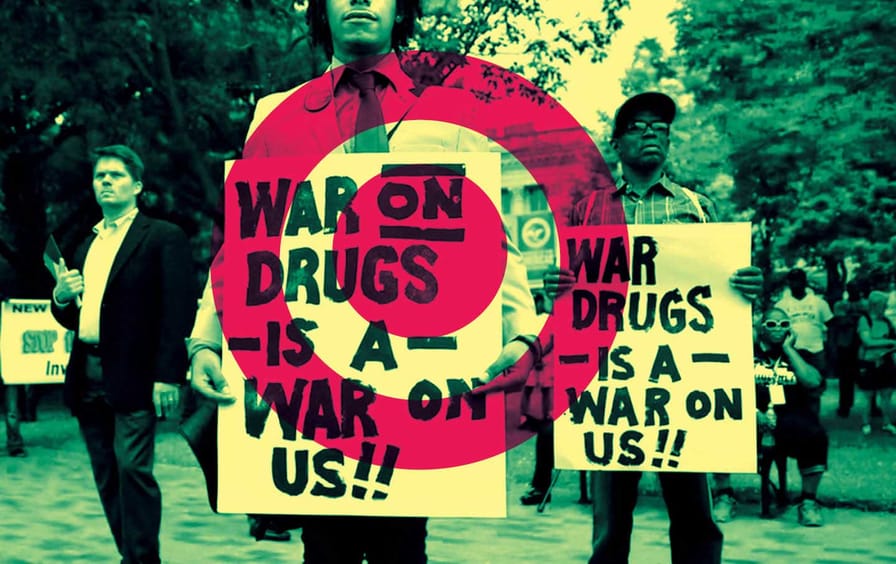
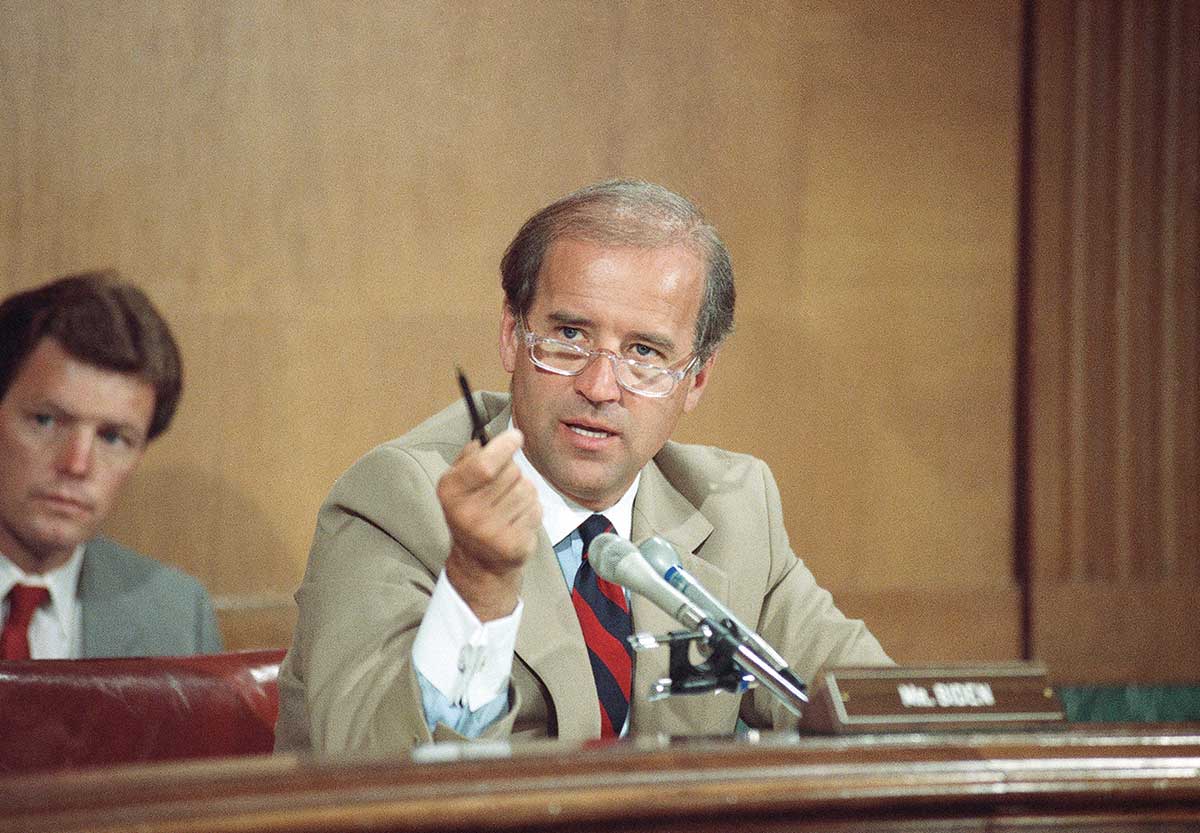
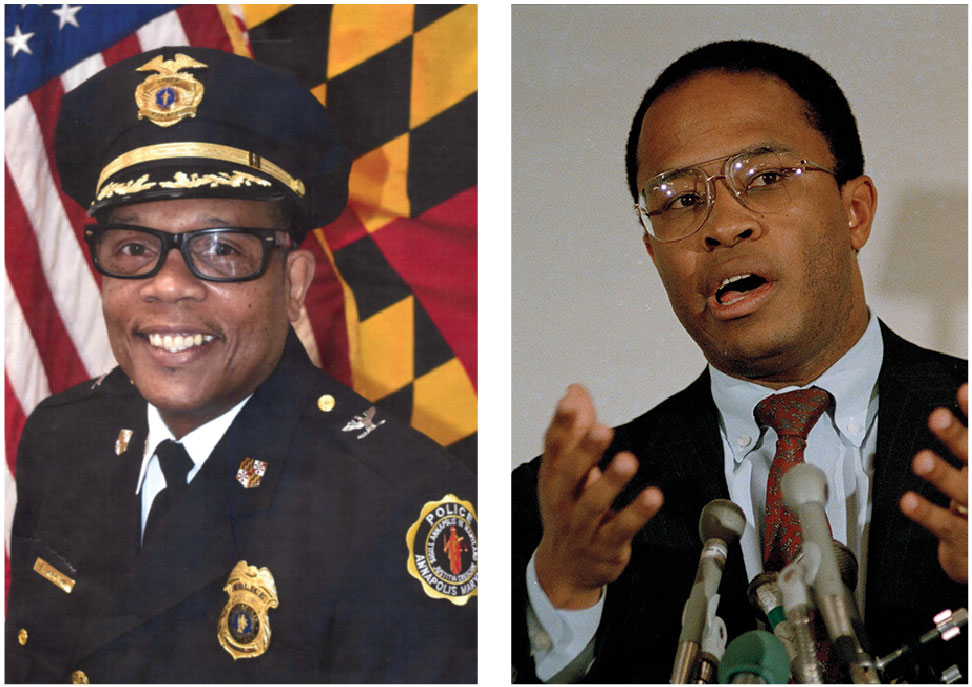
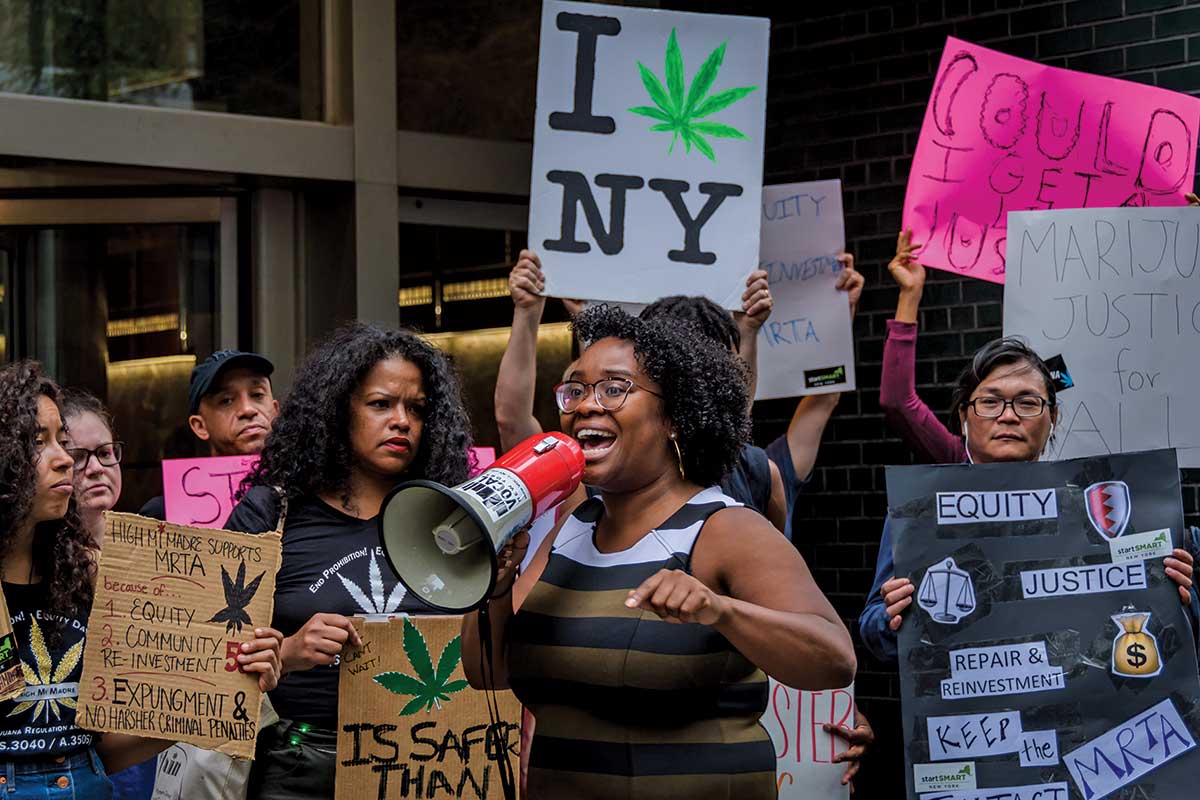
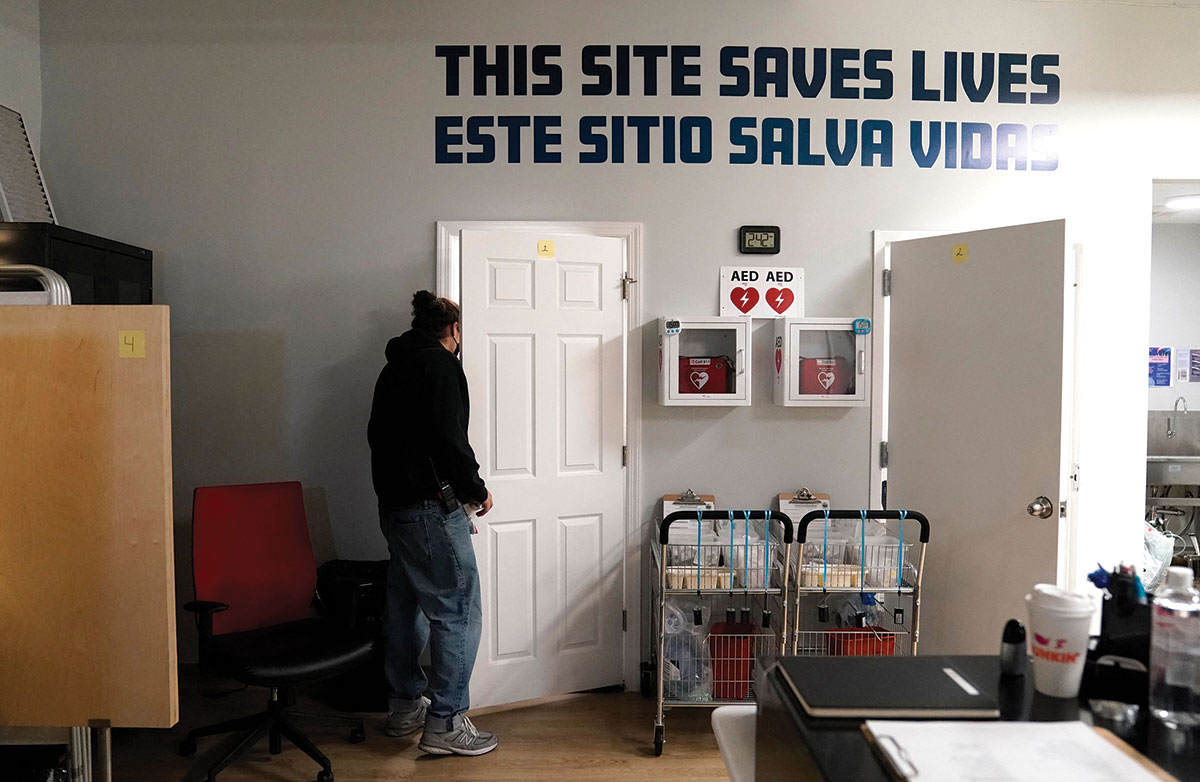
No comments:
Post a Comment